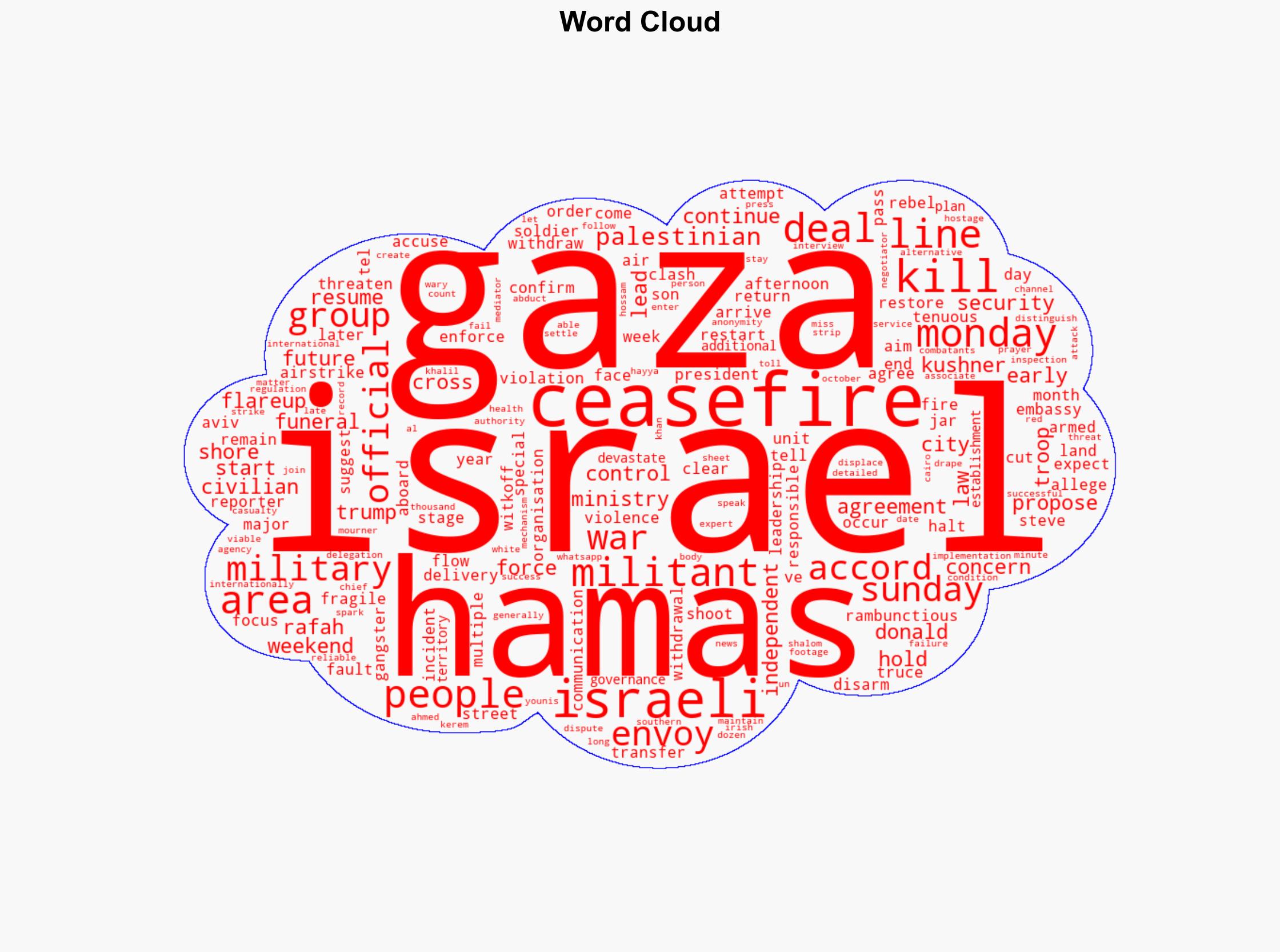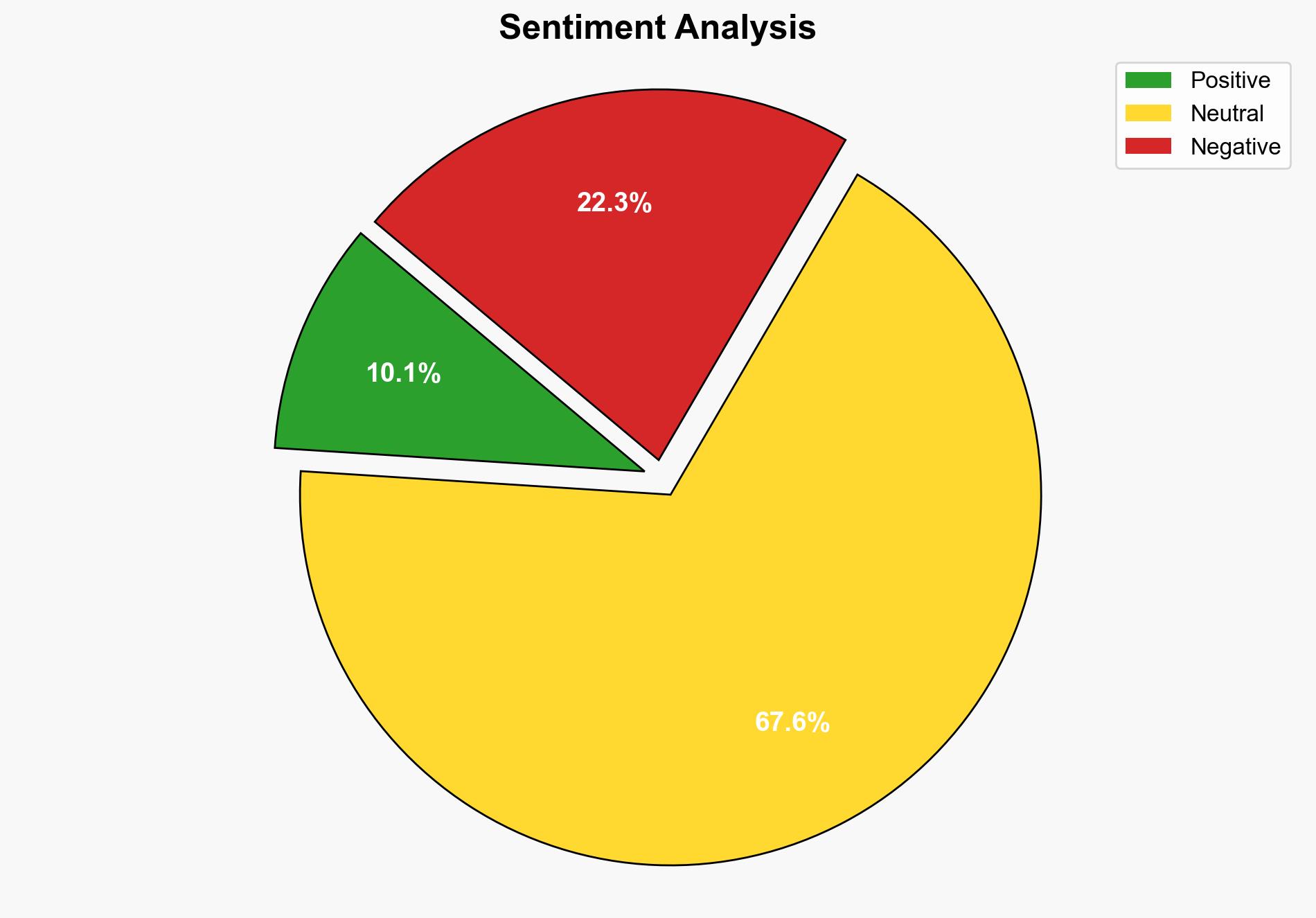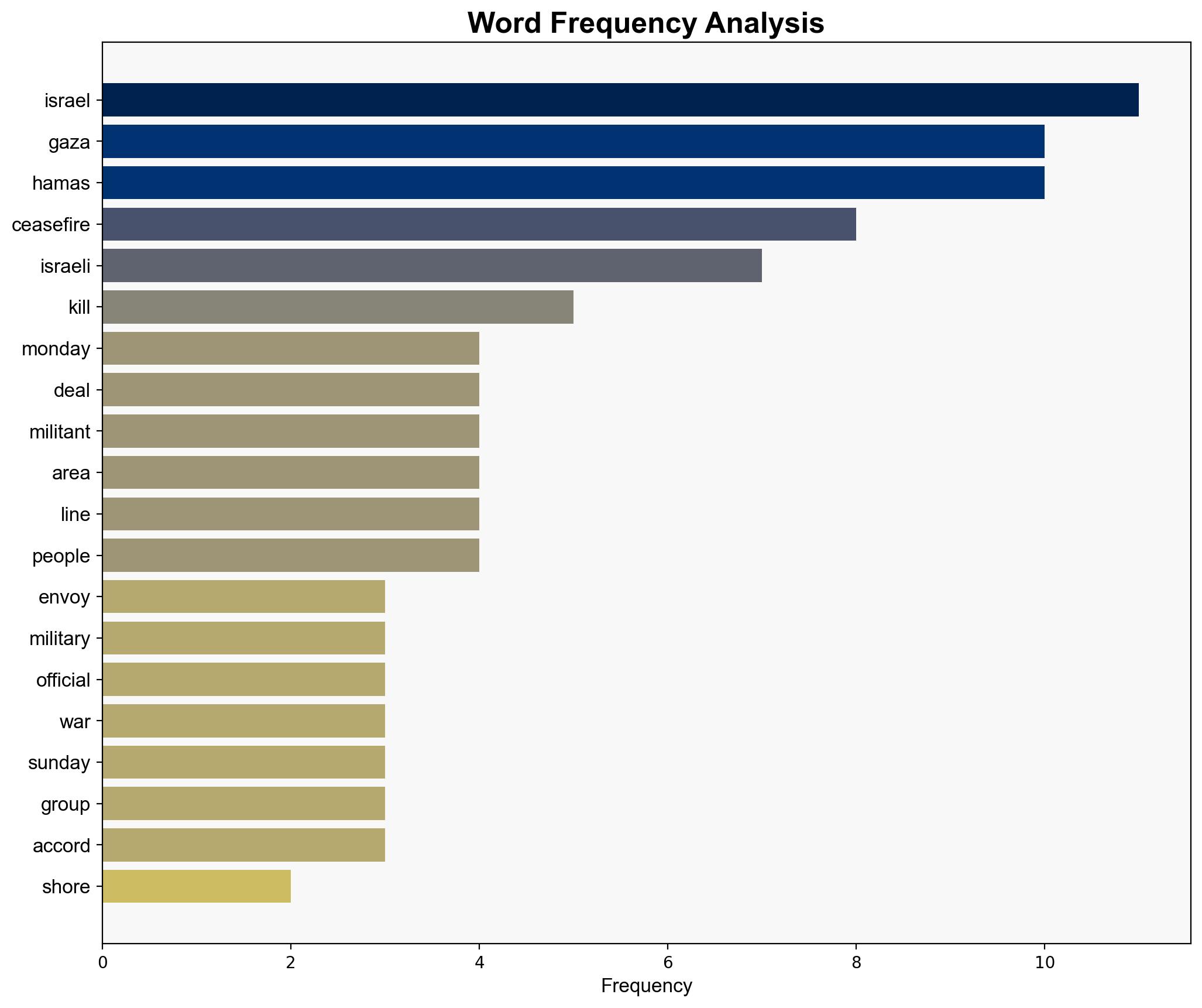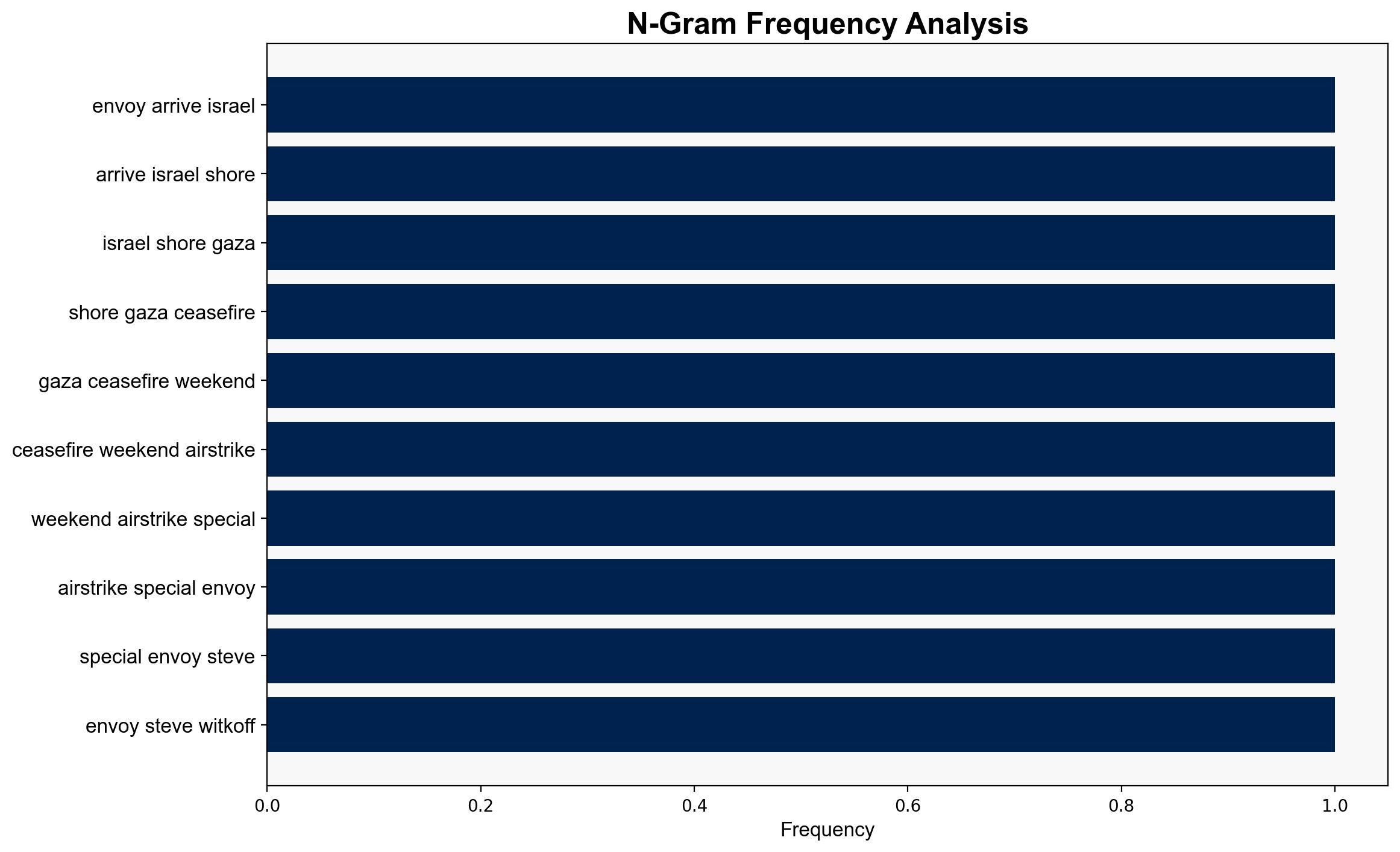Israel resumes ceasefire in Gaza and says aid deliveries will restart today – Independent.ie
Published on: 2025-10-20
Intelligence Report: Israel resumes ceasefire in Gaza and says aid deliveries will restart today – Independent.ie
1. BLUF (Bottom Line Up Front)
The most supported hypothesis is that the ceasefire is a temporary measure aimed at reducing immediate hostilities, but it is unlikely to result in long-term stability without significant changes in governance or international intervention. Confidence level is moderate due to ongoing tensions and lack of trust between parties. Recommended action includes bolstering diplomatic efforts and preparing contingency plans for potential escalation.
2. Competing Hypotheses
1. **Hypothesis A**: The ceasefire is a genuine attempt by both Israel and Hamas to de-escalate tensions and establish a foundation for long-term peace. This is supported by the involvement of international envoys and the resumption of aid deliveries.
2. **Hypothesis B**: The ceasefire is a tactical pause by both sides to regroup and rearm, with no real intention of pursuing a lasting peace. This is suggested by the continued military presence and accusations of ceasefire violations.
Using the Analysis of Competing Hypotheses (ACH) 2.0, Hypothesis B is better supported due to the historical pattern of short-lived truces and the strategic interests of both parties in maintaining leverage.
3. Key Assumptions and Red Flags
– **Assumptions**: Both hypotheses assume rational actor behavior and the capability of external mediators to influence outcomes.
– **Red Flags**: The lack of transparency in casualty figures and the anonymity of sources raise concerns about the reliability of the information.
– **Blind Spots**: Potential internal divisions within Hamas or Israeli political pressures are not fully addressed, which could affect the ceasefire’s durability.
4. Implications and Strategic Risks
– **Patterns**: The cyclical nature of conflict and ceasefire in Gaza suggests a high risk of re-escalation.
– **Cascading Threats**: Continued instability could lead to broader regional conflicts, affecting neighboring countries and international stakeholders.
– **Economic and Psychological Dimensions**: Prolonged instability may exacerbate humanitarian crises and fuel radicalization.
5. Recommendations and Outlook
- Enhance diplomatic engagement with key stakeholders to support a sustainable peace process.
- Prepare for potential escalation by reinforcing regional security partnerships.
- Scenario Projections:
- **Best Case**: Successful implementation of a comprehensive peace agreement with international backing.
- **Worst Case**: Breakdown of the ceasefire leading to a full-scale conflict.
- **Most Likely**: Periodic flare-ups with intermittent ceasefires, maintaining a status quo of instability.
6. Key Individuals and Entities
– Steve Witkoff
– Jared Kushner
– Khalil al-Hayya
– Hossam Ahmed
7. Thematic Tags
national security threats, regional focus, conflict resolution, humanitarian aid




